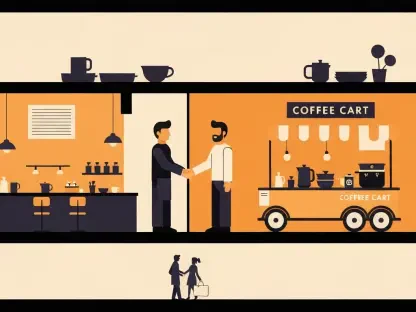Today, we’re sitting down with Katarina Railko, a renowned expert in the hospitality industry with deep insights into travel, tourism, and entertainment. With her extensive experience navigating the complexities of this sector, Katarina offers a unique perspective on the challenges companies face in today’s volatile market. Our conversation centers on the recent bankruptcy filing of Sonder Holdings Inc., exploring the financial struggles, integration hurdles with major partners, strategic decisions, and the impact on stakeholders as the company winds down operations.
Can you walk us through the primary factors that led Sonder Holdings Inc. to file for Chapter 7 bankruptcy and cease operations?
Certainly, Olivia. Sonder’s decision to file for Chapter 7 and wind down operations stems from a perfect storm of financial difficulties. The company was grappling with severe cash flow issues and mounting losses that made continuing operations unsustainable. A major contributing factor was the breakdown of their partnership with Marriott International, which not only disrupted their business model but also drained their resources. When you combine that with an inability to secure new funding or execute a viable transaction, the board was left with no option but to pursue liquidation.
How did the integration challenges with Marriott International specifically impact Sonder’s financial health?
The integration with Marriott was supposed to be a game-changer for Sonder, but it turned into a significant burden. There were unexpected hurdles in aligning Sonder’s technology with Marriott’s systems, which led to substantial delays. These delays translated into skyrocketing integration costs that Sonder simply couldn’t absorb. On top of that, their participation in Marriott’s Bonvoy reservation system resulted in a sharp drop in revenue, further eroding their working capital. It was a double hit—higher expenses and lower income—that they couldn’t recover from.
What was the significance of Marriott terminating their licensing agreement with Sonder on November 9?
The termination of the licensing agreement on November 9 was essentially the final blow for Sonder. This partnership was a cornerstone of their strategy to expand reach and stabilize revenue through Marriott’s established network. When Marriott pulled the plug, it severed a critical lifeline. Not only did it signal a loss of confidence, but it also eliminated any remaining hope of salvaging the integration efforts or regaining financial footing through that collaboration. It left Sonder in an untenable position.
What steps did Sonder take to try to avoid bankruptcy before reaching this critical point?
Sonder made exhaustive efforts to steer clear of bankruptcy. They explored every avenue, from seeking new financing to engaging with strategic and financial parties for potential partnerships or investments. There were also discussions around selling the business or parts of its operations to generate liquidity. The board evaluated a wide range of alternatives, but unfortunately, none of these efforts materialized into a solution that could keep the company afloat. The persistent financial strain ultimately forced their hand.
Can you elaborate on the specific technological challenges Sonder faced while integrating with Marriott’s systems?
Absolutely. The core issue was a mismatch between Sonder’s tech infrastructure and Marriott’s complex systems. Aligning booking platforms and data frameworks proved far more complicated than anticipated, leading to prolonged delays. These weren’t just minor glitches; they were fundamental incompatibilities that required extensive rework. This not only slowed down the integration timeline but also ballooned costs as Sonder had to invest heavily in technical solutions while still managing day-to-day operations.
How is Sonder approaching the wind-down of its operations across different regions?
For its U.S. operations, Sonder is initiating a court-supervised liquidation under Chapter 7, which means a trustee will oversee the process of selling off assets and settling debts. Internationally, they’re pursuing insolvency proceedings in the countries where they operate, though the specifics will vary based on local laws. The immediate focus is on an orderly shutdown, and updates on both U.S. and global operations will be communicated through the Chapter 7 trustee or relevant international subsidiaries as the process unfolds.
What kind of support or communication is Sonder offering to its employees and guests during this transition?
This is a heartbreaking time for Sonder’s employees and guests, and the company has acknowledged the dedication of its workforce over the years. While specific support measures for employees haven’t been publicly detailed, the leadership has expressed deep gratitude and is likely working to provide as much clarity as possible during the wind-down. For guests, there’s an expectation of disruptions to bookings and services, and the company is directing stakeholders to await further information from the trustee or subsidiaries for guidance on how to address concerns or claims.
Looking at the broader hospitality industry, what lessons can other companies draw from Sonder’s experience?
Sonder’s situation is a stark reminder of how critical partnerships and technology integration are in the hospitality space. Companies need to thoroughly vet the compatibility of systems and the financial implications of such collaborations before diving in. It also highlights the importance of maintaining liquidity and having contingency plans for when strategic partnerships falter. The industry is unforgiving, and over-reliance on a single partner or revenue stream can be catastrophic if things go south.
What is your forecast for the hospitality sector in light of challenges like those faced by Sonder?
I think the hospitality sector will continue to face turbulence, especially for companies that are heavily leveraged or dependent on complex partnerships. We’re likely to see more consolidation as smaller players struggle with rising costs and tech demands, while larger firms with deeper pockets may absorb these challenges or acquire distressed assets. However, there’s also an opportunity for innovation—firms that can streamline operations and build resilient, flexible business models will thrive. The key will be balancing growth ambitions with financial stability in an unpredictable market.









